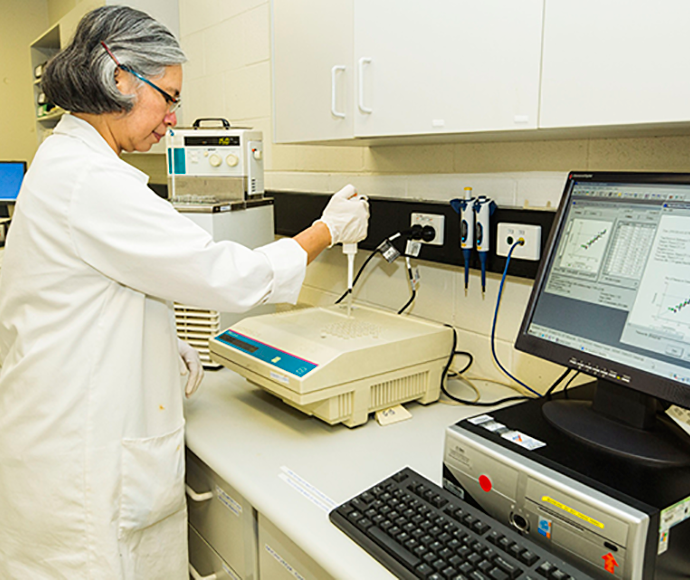Stakeholder profile: Meet the OEH Science Division
The NSW Office of Environment and Heritage (OEH)’s scientists provide a broad range of advice and services to the EPA – from analysing water quality and soils, running Australia’s largest air monitoring network, and providing chemical forensics, to providing expert advice on the risk and impacts of contaminants on people and the environment.

Dr Fleur Pablo from the OEH Science Division screens for toxicity
The OEH Science Division assists the EPA daily by providing valuable scientific advice and testing services on pollution related investigations and regulation, emergency response, such as fish kills, factory fires, and oil spills, and expert witness testimony for prosecutions.
When a sample arrives at OEH’s laboratory at Lidcombe it is labelled, catalogued and prepared for a range of chemical, physical and toxicology tests. In an average year around 4,000 samples are submitted for analysis. These include water, waste, unknown solids and liquids, air and particles, vegetation, soils, dead animals and sometimes more obscure samples like bricks and bowling balls.
In a typical pollution event testing, the EPA will seek to determine the pollutant, the source and effects on the environment. In the case of a fish kill, OEH’s forensic scientists will dissect fish organs, where chemicals are likely to accumulate - to identify the pollutants that killed the fish and whether they are present in the water. If a chemical is responsible, OEH Science may want to understand what harm the substance might cause the environment.
OEH Science then provides a comprehensive report to the EPA. If an EPA investigation leads to a prosecution, OEH Science also provides scientific evidence in court.
The OEH Science Division has conducted lab tests to assist the EPA’s investigations on fish kills at Bushell’s lagoon near Windsor and Malabar Bay ocean pool.
View a video about the OEH Science Division Ecotoxicology Laboratory
For more information about the Science Division visit OEH

